
|

|
|
Home Site Search Contact Us Subscribe
|
|
Hurricane Sandy Victims Return to Resilient, Sustainable, Affordable Homes on Raritan Bay in New Jersey The Rebuilding Union Beach demonstration project returns 14 families to new homes, and launches an online Project Guide for other communities needing to rebuild in the wake of a natural disaster. By Scott Lauer November 16, 2015 Three years after Hurricane Sandy struck the Northeast, thousands of families are still waiting to come home. The challenges of increased building costs, labor shortages, and coordination and disbursement of funding has shown how difficult it is to implement effective post-storm housing solutions. In Union Beach, NJ, an innovative project now offers a roadmap to build back more quickly, affordably, and sustainably.
Rebuilding Union Beach, a grant project, has designed, funded, and built storm-resistant, sustainable, and affordable homes for 14 Union Beach families who lost homes in Hurricane Sandy. Union Beach is a small, low- to moderate-income community located on the Raritan Bay in New Jersey. More than a third of the residences were built as single-story summer bungalows in the early 1900s. The borough was one of the hardest hit communities, losing 15% of its homes in the storm. “After the initial shock of the devastation from Hurricane Sandy, I saw the opportunity to develop a resilient, cost-effective, and sustainable housing solution for our community,” says Jennifer Maier, founder of Rebuilding Union Beach and former Borough Administrator of Union Beach. “We hope that in sharing our experience completing this project we can inform and encourage the implementation of similar post-storm housing models that have the ability to shape stronger and better prepared communities.”
Twelve of the homes were built using modular construction and two were built onsite using traditional construction, enabling a comparison of both methods. Modular home construction was chosen for the majority of homes because it offered a potentially faster and more cost-effective way to rebuild than traditional on-site construction, with a lower price per square foot. The savings, however, was offset by expensive truck delivery costs and local crane operations. Still, the modular homes were ultimately built faster, cost less, and had fewer issues than those built on-site. The post-storm construction boom in New Jersey caused increased costs for labor and materials due to a lack of available and experienced labor and shortages in supplies. This made on-site construction difficult in terms of both logistics and cost. The homes constructed on-site were more costly and prone to extended delays, and construction quality issues were further compounded by inclement weather.
Home models were matched to homeowners based on their family size, lot size, and special needs, including a fully wheelchair-accessible home. The homes are elevated and engineered to withstand high winds and flood surges. They incorporate resilient features, such as hurricane strapping and cement board siding, along with sustainable features including solar panels, renewable and non-toxic materials, permeable driveways, rainwater catchment, erosion-resistant planting, water-saving fixtures, and large windows to increase natural light and ventilation.
Each home has a front porch to extend usable space, taking advantage of elevated views and creating a welcoming street presence. Proportions and materials were carefully considered to enhance the community, reflect the bayside location, and minimize maintenance. The average construction cost of a completed home was $220,000.
Rebuilding Union Beach assisted homeowners in maximizing funds from government programs, insurance proceeds, and other recovery subsidies. The project team spent a significant amount of time and effort addressing the social, medical, and financial issues of participating families. They worked with case managers from partner organizations to help families navigate the labyrinth of insurance claims, grant assistance programs, and other regulations and requirements. This support helped families focus on rebuilding and financial planning in order to avoid foreclosures and other complications.
In addition to re-housing 14 families, Rebuilding Union Beach recently launched a Project Guide available on its website that offers guidance, analysis, and recommendations for building high-quality, resilient, and cost-effective housing that can enhance a community in the wake of a natural disaster. It lays out the challenges and benefits of modular and traditional construction methods, and describes the challenges the project team faced during the process.
Major grants to support the project were awarded by The Hurricane Sandy New Jersey Relief Fund, and the Robin Hood Relief Fund. Many other generous non-profit organizations, companies, faith-based groups, and volunteers contributed to the project. Rebuilding Union Beach has received awards from the American Planning Association, PlanSmart NJ, and the NJ State Assembly.
Scott Lauer is an architect and director of capital projects including Rebuilding Union Beach.
Rebuilding Union Beach Project Team: Jennifer Wenson Maier, Founder, Scott Lauer, Jovia Nierenberg, Kevin Watson, Brenda Zimmerman
Architectural Design Consultant: Rosen, Kelly, Conway Architecture & Design Landscape Design Consultant: Marpillero Pollak Architects Furniture/Interior Design: High Socks for Hope; Room In Our Hearts Identity/Project Guide Design: Jeff Hand Design Photography: Kevin Chu + Jessica Paul LLP |
(click on pictures to enlarge) 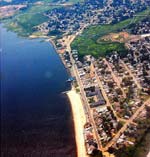 Rebuilding Union Beach Union Beach, NJ, is located on the southern edge of Raritan Bay, across from Staten Island, NY. 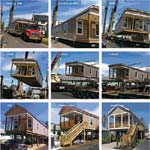 Rebuilding Union Beach A modular home was lifted and set in place in just a few hours. 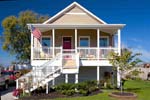 Kevin Chu + Jessica Paul LLP All homes, including this 3-bedroom, 2-bath model, are elevated on wood piles 3 feet above Base Flood Elevation. Plantings and trellises are used to screen the space below the home, which can be used for parking, storage, and ping pong. 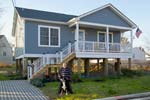 Kevin Chu + Jessica Paul LLP The average construction cost of each Rebuilding Union Beach home is $220,000. 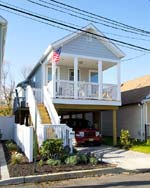 Kevin Chu + Jessica Paul LLP Homes on narrow lots have parking below to meet new local requirements for off-street parking. This is a response to challenges emergency vehicles faced navigating narrow streets with cars parked on both sides after Superstorm Sandy.  Kevin Chu + Jessica Paul LLP This 2-story model houses a multi-generational family. Each has their own floor for privacy and share a common kitchen.  Kevin Chu + Jessica Paul LLP Erosion-resistant native plants, permeable driveways, and rain barrels are used to mitigate storm-water run-off. 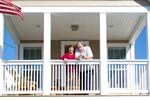 Kevin Chu + Jessica Paul LLP The front porch of this 2-bedroom, 1-bath home extends the living space and creates a welcoming street presence. 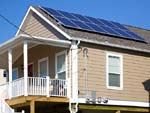 Kevin Chu + Jessica Paul LLP Solar panels promote sustainable energy and reduce utility bills. This helps offset tax increases levied on the new homes. 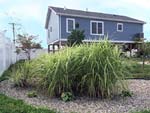 Rebuilding Union Beach Bioswales help mitigate stormwater runoff. 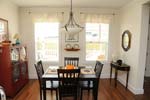 Rebuilding Union Beach Homes feature extensive glazing to maximize natural light, ventilation, and views. 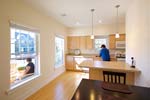 Kevin Chu + Jessica Paul LLP Sustainable materials, including bamboo floors and non-VOC paint, are used in all homes. A material and color palette was developed to reflect the Bayfront location. 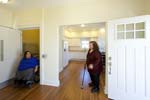 Kevin Chu + Jessica Paul LLP A fully accessible home model accommodates a full range of special needs. |
© 2015 ArchNewsNow.com